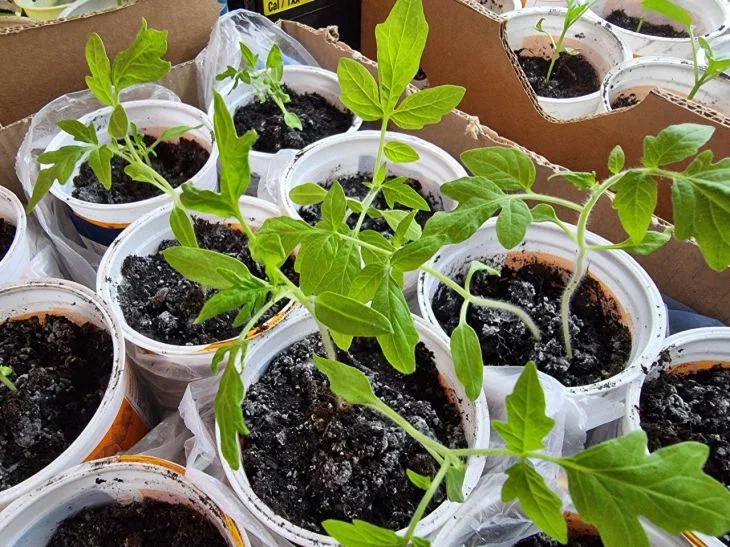Many gardeners, when growing tomato seedlings, encounter a problem when the color changes - the stems and leaves, which are supposed to be green, acquire a purple hue.
An expert of the online publication BelNovosti, agronomist, landscape designer Anastasia Kovrizhnykh revealed the reasons for this, undoubtedly, unpleasant phenomenon.
Phosphorus deficiency
Phosphorus plays a key role in root development and fruit formation. When seedlings lack this element, they may begin to turn purple and slow down their growth. The problem can be solved by adding phosphorus fertilizers, such as superphosphate or potassium monophosphate.
Low temperatures
At low temperatures, seedlings may experience stress, which causes color change and slower growth, so make sure that the temperature for seedlings is comfortable - about 20-22 ° C during the day and 16-18 ° C at night.
Incorrect watering
Both too much and too little moisture can cause the leaves to turn purple. To prevent color change, water the seedlings only when the top layer of soil becomes dry, and avoid overwatering the soil.

Lack of light
If seedlings do not receive enough light, they may become weak and start to change the color of their leaves to purple. Provide seedlings with bright and long-lasting light, using special phytolamps if necessary.
Thickening of plantings
If tomato seedlings are growing too close together, they may not have enough space and nutrients. Adjust the distance between plants by removing weaker or diseased plants, leaving about 2 to 3 inches between each healthy plant.
Diseases and pests
Purple tint on seedlings may be due to diseases or pests. If problems are detected, treat seedlings with appropriate products designed to control pests or treat diseases.
Earlier we talked about how to create a vegetable garden in the garden.









